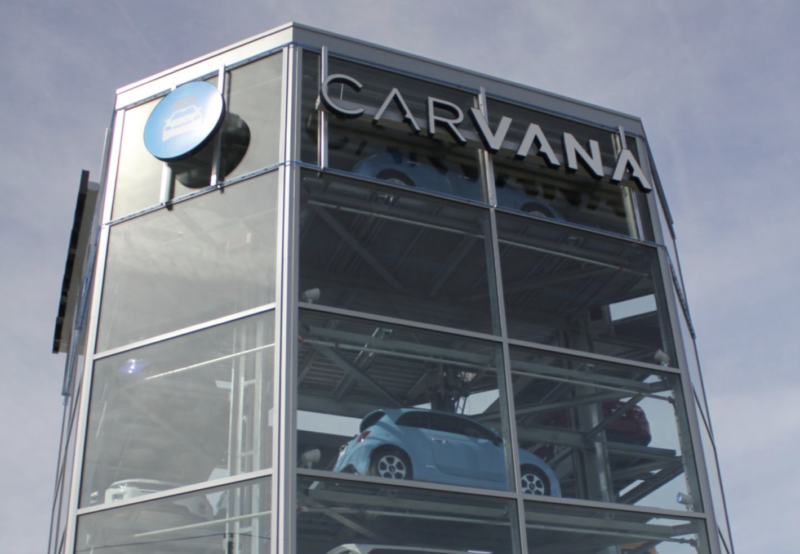
Last month it took Carey Cherner, a 36-year-old used car dealer in Kensington, Maryland, less than 12 hours to sell a 2001 Ford F-150 pick-up truck with 184,000 miles on the clock. It went for $7,500—50 percent higher than usual.
Cherner’s experience was not a one-off in the US used car market, where prices are rising rapidly. The industry is at the heart of the country’s growing inflationary pressures—and has therefore become a subject of great interest to policymakers in Washington.
“There’s more people buying cars than there are cars in the market, which makes it go kind of crazy,” Cherner said.
Unusually, officials are watching used car prices closely as an indicator for the future path of inflation. If the price rises become entrenched and spread into other parts of the economy, America could face a prolonged period of overheating for the first time in decades, posing a big challenge for the US Federal Reserve and Joe Biden’s economic policymakers.
The cost of used cars and trucks jumped 10 percent month-on-month in April, and was up 21 percent compared with a year earlier, making it one of the main drivers of the 4.2 percent year-on-year surge in the US Bureau of Labor Statistics’ consumer price index. Core inflation—excluding volatile food and energy prices—hit 3 percent.
Ernie Garcia, founder of online used car sales platform Carvana, said: “Prices are unquestionably higher than they’ve ever been and have unquestionably moved more quickly than I believe they’ve ever moved.”
Policymakers insist the pressures will gradually abate, reinforcing their view that the broader inflationary trend will be mainly transitory. In a speech on Tuesday, Lael Brainard, a Fed governor, said that although the used vehicle cost pressures “may persist over the summer months, I expect them to fade and likely reverse somewhat in subsequent quarters.”
But while many economists agree the inflationary pressures are likely to be temporary, they also acknowledge that uncertainty over the economic outlook is huge; as the pandemic recedes across America, consumers are flush with savings and government payments while supply chains are strained by bottlenecks.
“We are seeing a level of stimulus that is essentially unprecedented in the last 50 years, plus other forms of support for spending. These are really uncharted waters and we have to be humble,” said Nathan Sheets, chief economist at PGIM Fixed Income and a former under-secretary at the US Treasury. “How sure am I that I am right that inflation is going to dissipate? Probably 80 percent, but that is still a pretty fat tail.”
The surge in prices is driven by the slowdown in new car production because of lockdowns and semiconductor shortages.
In addition—unusually for a recession—the number of customers who defaulted on vehicle finance and had their car repossessed has declined, cutting off another source of supply for dealers such as Cherner.
Demand, meanwhile, has boomed. Americans’ preferences have shifted away from public transport because of the pandemic. Stimulus measures have helped them to spend. And rental car companies that sold off their fleets as travel collapsed last year are now scrambling to rebuild them with used vehicles.
“It’s incredibly tight right now: you have more demand . . . that is supported by fiscal stimulus, so it’s just like a perfect storm. And we’re seeing that clearly in prices,” said Laura Rosner, a senior economist at MacroPolicy Perspectives.
But Jonathan Smoke of Cox Automotive, a consultancy for car dealers, noted that “several leading indicators of what’s happening at our auctions” suggest “the price appreciation streak is likely going to end.”
That leaves economists and US officials considering how long it will take for price growth to return to levels closer to the Fed’s average 2 percent target, which allows for some overshooting.
Goldman Sachs predicts core inflation will peak at 3.6 percent year-on-year in June, drifting down slightly to 3.5 percent by the end of the year and averaging 2.7 percent in 2022.
Officials at the Fed are not only watching headline and core inflation but also other measures of price growth.
The core personal consumption expenditures index—traditionally the Fed’s preferred indicator—rose 3.1 percent in April, although the Dallas Fed’s trimmed mean PCE indicator increased by a more modest 1.8 percent.
The US central bank has also developed a quarterly index of common inflation expectations to assess whether they are moving away from its goals; its next reading is due in July. Despite those efforts, the uncertainty has rattled some economists and investors.
“Overall our base case around inflation hasn’t changed, but our conviction in that view has to be lower,” said Lynda Schweitzer, co-head of the global fixed income team at Loomis Sayles. “We have to be considering the risks of something more sustained.”
And in Maryland, Cherner is optimistic in the outlook. “I don’t see a steep drop-off [in prices] until there’s way more supply than there is demand,” he said. “They still have to build the new cars and get the chips in them and get them out. I just think it’s going to last.”
© 2020 The Financial Times Ltd. All rights reserved. Not to be redistributed, copied, or modified in any way.
"used" - Google News
June 05, 2021 at 07:15PM
https://ift.tt/3wXLHQr
“Kind of crazy”—how the booming US used car market is driving inflation - Ars Technica
"used" - Google News
https://ift.tt/2ypoNIZ
https://ift.tt/3aVpWFD
Bagikan Berita Ini














0 Response to "“Kind of crazy”—how the booming US used car market is driving inflation - Ars Technica"
Post a Comment